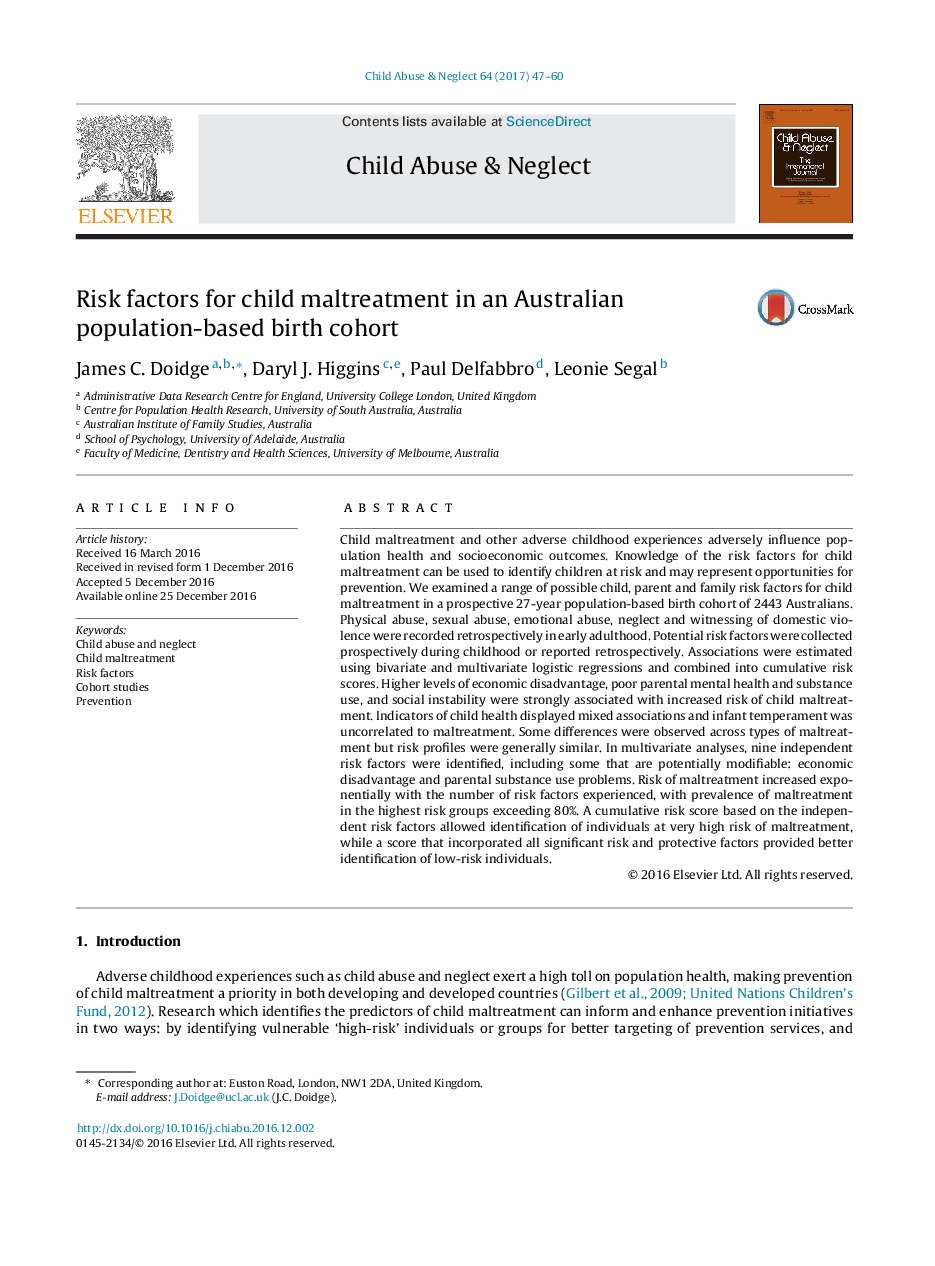| Article ID | Journal | Published Year | Pages | File Type |
|---|---|---|---|---|
| 4936016 | Child Abuse & Neglect | 2017 | 14 Pages |
Abstract
Child maltreatment and other adverse childhood experiences adversely influence population health and socioeconomic outcomes. Knowledge of the risk factors for child maltreatment can be used to identify children at risk and may represent opportunities for prevention. We examined a range of possible child, parent and family risk factors for child maltreatment in a prospective 27-year population-based birth cohort of 2443 Australians. Physical abuse, sexual abuse, emotional abuse, neglect and witnessing of domestic violence were recorded retrospectively in early adulthood. Potential risk factors were collected prospectively during childhood or reported retrospectively. Associations were estimated using bivariate and multivariate logistic regressions and combined into cumulative risk scores. Higher levels of economic disadvantage, poor parental mental health and substance use, and social instability were strongly associated with increased risk of child maltreatment. Indicators of child health displayed mixed associations and infant temperament was uncorrelated to maltreatment. Some differences were observed across types of maltreatment but risk profiles were generally similar. In multivariate analyses, nine independent risk factors were identified, including some that are potentially modifiable: economic disadvantage and parental substance use problems. Risk of maltreatment increased exponentially with the number of risk factors experienced, with prevalence of maltreatment in the highest risk groups exceeding 80%. A cumulative risk score based on the independent risk factors allowed identification of individuals at very high risk of maltreatment, while a score that incorporated all significant risk and protective factors provided better identification of low-risk individuals.
Related Topics
Health Sciences
Medicine and Dentistry
Perinatology, Pediatrics and Child Health
Authors
James C. Doidge, Daryl J. Higgins, Paul Delfabbro, Leonie Segal,
